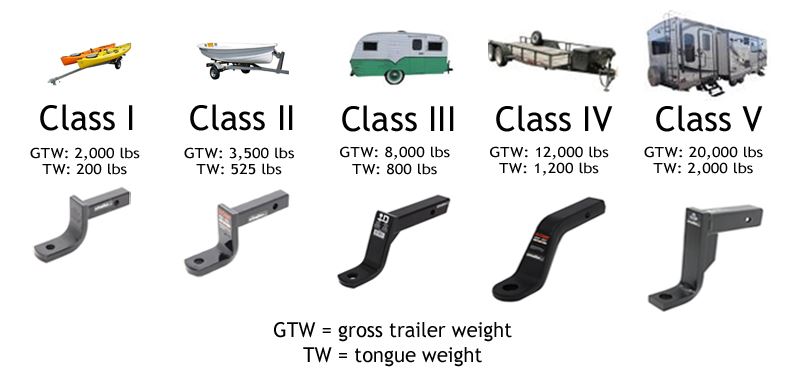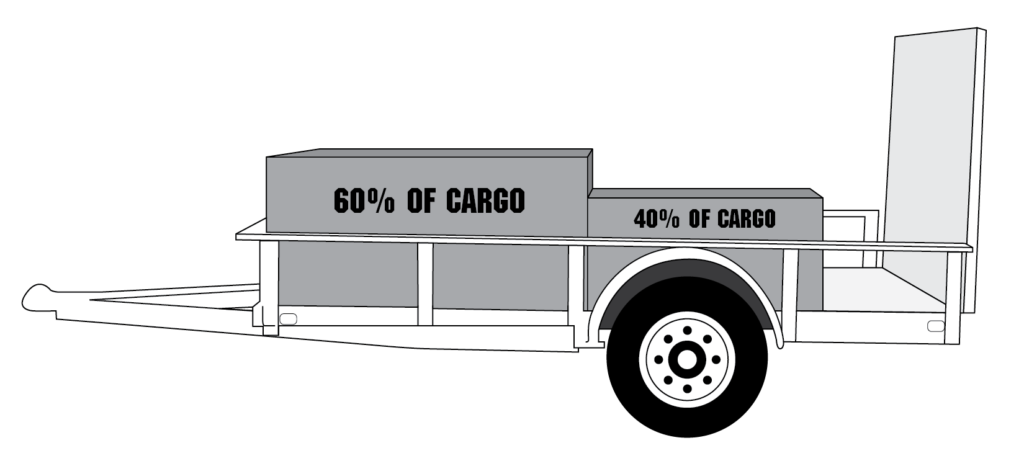
GVWR - Definition, Purpose and How to Determine Gross Vehicle Weight Rating
The GVWR (gross vehicle weight rating) is a safety regulation used to prevent the overloading of vehicles. It's the maximum safe operating weight of a truck, including its net weight, plus driver, passengers, cargo, and fuel. The gross vehicle weight rating doesn’t change after a manufacturer determines it for a vehicle. The truck manufacturer determines rating by the combined weight of the strongest weight-bearing elements, like the axles, and the weaker parts, such as the tires, frame, and body. It determines the vehicle's class, which defines the regulations that it needs to obey. In some cases, drivers may need to have a certain type of license for driving a vehicle. Understanding GVWR, and following the proper weight classification limits, helps to ensure your safety along with those who share the track with you.
What is GVWR?
It is a weight rating that applies to vehicles that fit into the different categories, from light pick-up trucks to trucks towing large tractor-trailers. The GVWR is a weight listed by the vehicle manufacturer that can be boiled down to the maximum amount of vehicle can weigh. It includes the vehicle’s passenger’s weight, cargo weight, and unloaded curb weight.If a truck's gross vehicle weight rating is listed at 9,000 pounds and it weights 4,000 empty, then its payload capacity is 5,000 pounds. It can be broken down into one rating classification compiled of two separate elements:
- the base curb weight of the vehicle;
- the weight of optional truck accessories, cargo, driver, and passengers.



Light-Duty Trucks
- Class 1 - 0 to 6,000 pounds;
- Class 2 - 6,001 to 10,000 pounds;
- Class 3 - 10,001 to 14,000.
Medium-Duty Trucks
- Class 4 - 14,001 to 16,000 pounds;
- Class 5 - 16,001 to 19,500 pounds;
- Class 6 - 19,501 to 26,000 pounds.
Heavy-Duty Trucks
- Class 7 - 26,001 to 33,000 pounds;
- Class 8 - 33,001 pounds or more.
How to Calculate GVWR For Trailer?
You can calculate gross vehicle weight rating by adding numbers into this formula:GVWR vs GAWR
It’s the maximum operating weight, a number that's defined only by the manufacturer of the truck. Gross vehicle weight rating includes every part of the truck/trailer, such as the body, chassis, engine, fuel, accessories, etc. This information must be displayed on the vehicle. Typically, it’s displayed on a metal data plate that can be found on the vehicle’s doorjamb or the inside of the doors on both sides of the power unit. Plates or labels that display gross weight must stay legible since trucks are exposed to different weather conditions. Manufacturers generally opt vehicle weight rating durable metal data plates to ensure readability during the vehicle’s lifespan. On the opposite side is the GAWR (gross axle weight rating). This number deals only with tire size and inflation pressure as they correspond to single axles. Due to this, each axle has its unique GAWR typically accompanied by 'RR' (rear wheel) or 'FR' (front wheel).Read More
- Motor Oil Explained
- Towing Capacity Guide- Meaning, Goal, and How to Increase It
- Payload Capacity - How to Get Most Out of Your Truck
- CNG Cargo Vans: Eco-Friendly
- Fleet Management Software - Benefits and Best Solutions
- 5 Warning Signs Your Car Needs Maintenance
- Why Buying Ex-Fleet Vehicles Is a Good Idea
- Pickup Truck or a Cargo Van
GVWR vs GCWR
GVWR is the overall weight of the truck (including payload), while GCWR (gross combined weight rating) is a specialized weight rating that can only be determined by the manufacturer of the chassis. GCWR is established by the manufacturers of the chassis, based on the corresponding SAE International guidelines. A vehicle’s GCWR can be determined by taking both the total weight of the trailer and the total weight of the vehicle. These weights added together, make up the final GCWR. Usually, the GCWR is used in vehicle testing to define a range of safety trials, primarily, the braking capacities for the towing vehicle.Curb Weight vs GVWR
It’s pivotal to remember that the difference between the truck's curb weight and gross vehicle weight rating isn't a real number of the vehicle’s payload rating. You have to consider the weight of the cargo and the following elements:- Passengers;
- Fuel;
- Accessories;
- The “Tongue Weight” of a trailer.
What is the Tongue Weight?
It’s the downward force that the trailer’s tongue exerts on the hitch that’s connected to the truck. Less tongue weight can cause the back end of the vehicle to lift, which can result in a severe condition known as trailer sway. On the other side, too much tongue weight can cause the back end of the truck to sag which negatively effects the handling of the truck, the driver's visibility, and the effectiveness of the vehicle's brakes. Most industry experts agree that an acceptable tongue weight is between 10 to 15 percent of the GTW (gross trailer weight). So, if you are towing a 6000 lbs trailer, the tongue weight should be measured at approximately 600 lbs.What is GVWR on a Trailer?
If the truck’s capacity is rated at 11,000 pounds (determined by the axle capacities), and the trailer weighs 2,500 pounds, then your GVWR trailer capacity is 14,600 pounds. The capacity rating of your trailer is defined by subtracting the weight of the trailer from the gross vehicle weight rating of 11,000 pounds.Trailer Hitch Types
Hitches are categorized in five classes:- Class 1 – 2,000 lbs max trailer weight;
- Class 2 – 3,500 lbs max trailer weight;
- Class 3 – 5,000 lbs max trailer weight;
- Class 4 – 10,000 lbs max trailer weight;
- Class 5 – 10,000+ lbs max trailer weight.

The way it works is that the hitch you are using should be strong enough to handle the gross trailer weight. If you tow more than a hitch can handle, chances are good you’ll damage a vehicle or hitch frame. Plus, when you go to the larger Class 4 or Class 5 hitches, you need a “weight distributing hitch,” which ensures that the truck’s frame distributes the load on your hitch. That makes the trailer easier to control. It’s great news that most newer trucks that are rated to pull 10k+ pounds include weight distributing hitch designs.
Truck Regulations
If a truck has a GVWR of more than 10,001 pounds and is used for a business, then it's subject to state and federal safety regulations for the safe operation of commercial motor vehicles. Vehicles over this weight must stop at state weigh and inspection stations, and follow regulations concerning hours of operating and do medical examinations. You don't require a CDL to drive vehicles from Class 1 to Class 6, but a truck with a gross vehicle weight rating over 10,001 pounds should be identified with the name of the business and the USDOT number. Check with your local/state transportation authorities and the U.S. Department of Transportation to ensure that you comply with the most recent laws, regulations, and rules.GVWR Plate Tips
It comes already attached to the truck in the form of a thin metal plate that’s installed either on the vehicle doorjamb or inside of the door. Still, it doesn’t mean that you can rely on it being there. There’re many reasons for this, including wear-and-tear or previous sellers remove it. If you buy a used commercial truck, the original label can also be missing if parts have been swapped out due to damage or repair. Let’s look at these three methods you can follow to guarantee that your gross vehicle weight rating plates are up-to-code and exactly where they need to be:
How to Load Cargo Properly
Proper loading protects both the cargo and the trailer or truck. When it comes to loading, always place the heaviest load as far forward in the vehicle as possible, balancing the cargo on both sides. Cargo behind the rear axle of the vehicle may cause the front end of the truck to have less weight and drastically affect steering and braking. Secure the loads using cargo net, ratchet straps, bungee cords, or any other device that will keep the cargo from moving during transport. Make sure that the safe capacity of the straps is higher than the weight of the cargo. Research the cargo’s weight before it gets loaded to ensure you not exceed the truck’s GVWR.
